Head Injuries Soccer - Brain Damage to Children from Heading
Does the repeated heading of balls by soccer players cause head injuries and damage to the brain? This has often concerned many parents of children who play soccer and recently research has suggested that this concern is justified. These concerns have arisen when there has been similar concerns about head injuries in other football codes and ice hockey.
Researchers in New York at the Albert Einstein College of Medicine conducted a study of 34 men and women soccer-playing adults who had played soccer since childhood and were active soccer players. A questionnaire was used to estimate the number of times that each player had headed a soccer ball in the previous 12 months. They were also asked whether they had showed any symptoms of concussions in their careers.
In the research study, the soccer players also undertook brain function and memory tests. MRI techniques were used to look for structural changes in the brain of soccer players that could be related to the frequency with which they headed the ball.
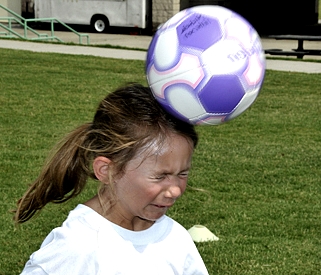
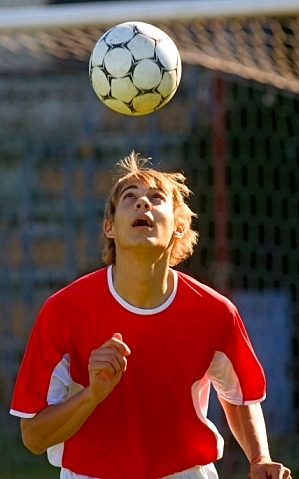
The study found that players who headed the ball in the last 12 months more than about 1,100 times showed significant signs of structural damage in their brains. The sites affected were in brain areas associated with attention, memory and the processing of visual information. Players who headed the ball less than 1000 times a year showed no signs of brain damage.
The type and location of white matter loss was shown to resemble that shown by people who had traumatic brain injuries such as a serious concussion. However only one of the players had reported concussions in their questionnaires .
Players who had headed the ball more frequently in past year also significantly reduced cognitive ability as shown by a decline in accuracy for recalling lists of words read to them.
Quote:
"Based on these results, it does look like there is a potential for significant effects on the brain from frequent heading," says Dr. Michael L. Lipton, associate director of the Gruss Magnetic Resonance Research Center at Einstein and senior author of the study.
"Our goal was to determine if there is a threshold level for heading frequency that, when surpassed, resulted in detectable white matter injury," Dr. Lipton said. The analysis revealed a threshold level of approximately 1,000 to 1,500 heads per year. "
"What we've shown here is compelling evidence that there are brain changes that look like traumatic brain injury as a result of heading a soccer ball with high frequency," Dr. Lipton said. "Given that soccer is the most popular sport worldwide and is played extensively by children, these are findings that should be taken into consideration in order to protect soccer players."
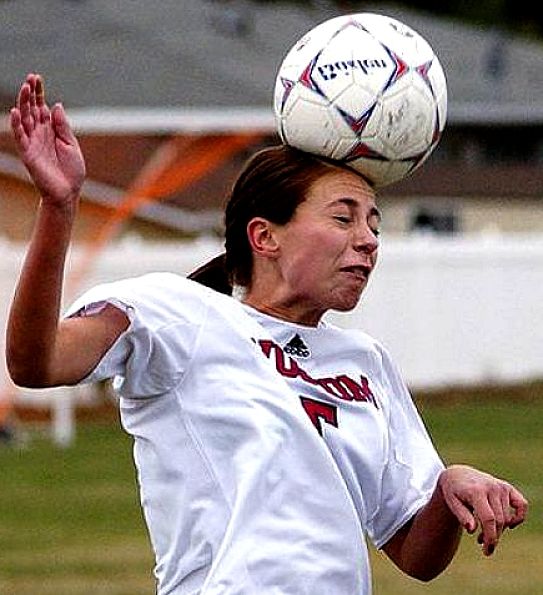
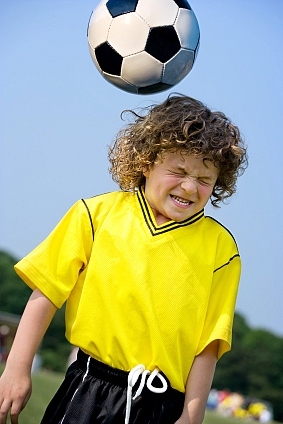
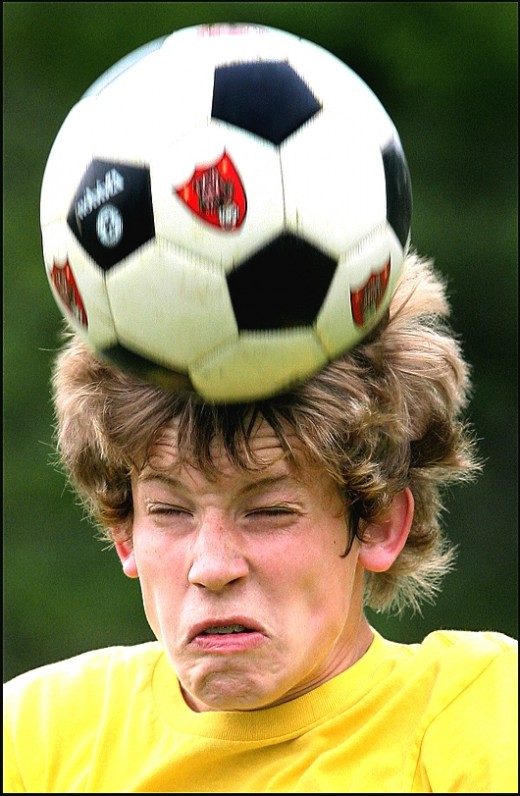
Concern about the effect of heading on brains has been expressed for many years but it has been hard to establish cause and effect as well as to quantify the relative amount of heading. Similar concerns have been raised about the current study because the heading frequency was based on questionnaires and the role of head clashes and other bangs to heads when playing soccer has not been assessed. The structural damage could have been caused by non-heading impacts to the head during soccer games. Questionnaires are an unreliable way of estimating heading frequency. Likewise the results could have causes unrelated to soccer. Perhaps soccer players who head the ball more frequently may drink more heavily because they score more goals! Similarly layers who head the ball more frequently may bang their heads more often in ways not related to heading the ball.
A study conducted in the late 1990's showed that retired, professional Scandinavian soccer players had signs of brain damage. However these studies were criticised because of doubts about how the heading frequency data and the failure to eliminate alcohol use or severe concussions as possible causes of the findings.
Elizabeth Larson, a scientist at Humboldt State University, in California, monitored the heading history and brain function of 51 female and male soccer players throughout a soccer season. She found that the players who headed the ball more frequently (during practices or in games) had lower scores on tests of visual memory, including recalling images and shapes, at the end of the season than at the beginning. Players who headed more often also reported more episodes of dizziness and headaches than other players. However, none of the players with poor cognitive test scores had reported any memory problems and the effects were described as 'subtle' by the researchers.
So what should be Done
Obviously more research is required with better controls and information about heading frequency. The research shows that there appears to be a threshold. and that heading the ball less than 1,100 times a year, which is a relatively high number (40 times a week, for a 6-month season) appears to be safe. Although the study did not involve children, the researchers suggested that as a precaution kids younger than 12 should not be heading, given their immaturity. They also recommended parents should monitor the number of heading repetitions. Also parents should look or any symptoms such as headaches or dizziness after practice and games. They also suggested that the frequency of heading drills during practice should be reduced, with careful attention on how to head a ball properly.
How to Head the Ball Properly
Quote:
"...the forehead should be the only portion of your head that comes in contact with the ball. If you cannot ensure that it is your forehead that connects with the ball, it is better to let the ball pass. The reason is quite simple: the forehead is the most densely boned portion of your skull, and it is the least likely to be damaged by a high velocity impact, thus protecting your brain the best. If the ball comes in contact with the temple, however, the same cannot be said. Other than the head, the neck and torso also play an integral part in heading the ball effectively. At the moment of impact when the ball is striking the forehead, the neck is completely rigid, thus protecting the integrity of the neck muscles as well as that of the spine."
More research is needed on the effects of heading of the ball on the brain especially in children.